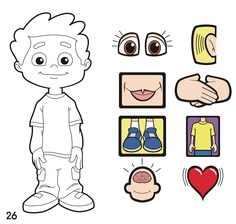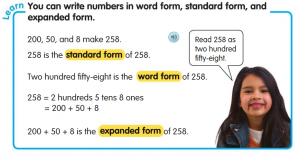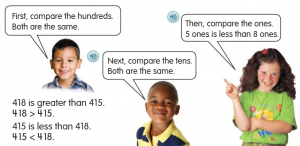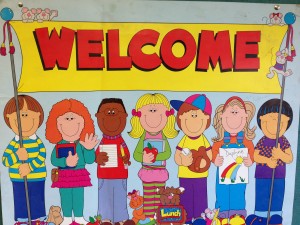Posted by kavery508 | Posted in Uncategorized | Posted on September 15, 2014
Welcome to our classroom blog! I’m very glad you are here. On this site you will find weekly updates to curriculum; links to websites for students and parents; classroom information and requests; and upcoming events. This blog IS THE MAIN SOURCE OF INFORMATION FOR OUR CLASS, taking the place of a newsletter and most written communication home from me. It is updated every Monday afternoon, except vacation weeks. If you prefer to receive a paper copy (or are unable to access the blog electronically), simply let me know and I’ll send one home each week to you!
Some features of our blog to note:
-
Subscribe: You can receive alerts when the blog is updated. Simply use the “Subscribe by Email” widget at the bottom of the right sidebar. It really is spam-free!
- Student Resources (sidebar): Links to sites recommended for use by students and families for homework, practice, and enrichment. You will receive in paper form your child’s password and access code for Raz Kids and Xtra Math. The teacher name to sign into Raz Kids is “kaveryf”, which can also be seen by hovering the cursor over the link in case you forget. More information on using these sites will be forthcoming when we begin using them next month.
- Parent Resources (sidebar): Links to sites for creating math facts quizzes, finding just-right books for your child, and getting information about our grade, school, and district.
- Learning (sidebar): Links to sites to learn more about the processes and content taught in school, including tips for helping your child at home (updated throughout the year).
- In addition, links will be periodically added to each week’s posts to provide more information and opportunities for having fun learning at home.
This week’s learning:
 We’re off and running! So much of our success depends on building our classroom community of learners right. As a school, we are committed to developing Social Thinking in children. This means teaching kids how to recognize and monitor their emotions and behavior, and how to interact with others. Besides the above work, school psychologists Ms. Demoga and Dr. Margiano came in to teach us about Whole Body Listening. This means using our eyes, ears, hearts and minds to understand what others say and mean. We’ll be exploring the concept further this week as we practice what it looks like and sounds like. For more info on Social Thinking, visit this site and explore its links: https://www.socialthinking.com/what-is-social-thinking
We’re off and running! So much of our success depends on building our classroom community of learners right. As a school, we are committed to developing Social Thinking in children. This means teaching kids how to recognize and monitor their emotions and behavior, and how to interact with others. Besides the above work, school psychologists Ms. Demoga and Dr. Margiano came in to teach us about Whole Body Listening. This means using our eyes, ears, hearts and minds to understand what others say and mean. We’ll be exploring the concept further this week as we practice what it looks like and sounds like. For more info on Social Thinking, visit this site and explore its links: https://www.socialthinking.com/what-is-social-thinking
![]() Our Daily 5 CAFE focus this week is on activating schema and making connections when we read (part of Comprehension). These are huge strategies for young readers. Schema is what a reader understands about anything in life. We have schema about topics like making friends, seasons of the year, and so on. We also have schema for how to solve problems, and how we approach reading. Sometimes our schema is correct and sometimes it contains misunderstandings, which we learn to correct by reading and thinking. We therefore teach young readers to recognize what their schema is telling them and to use it as an access point to understanding what is read by making connections to it. Questions to ask your child during reading (either aloud to him/her or when s/he is reading): What do already know about ____ and what do you wonder? What does that remind you of in your life? This kind of thinking can help students understand characters, plot, and information better. More info is at Reading Rockets, a terrific literacy site for teachers and parents: http://www.readingrockets.org/article/29200/
Our Daily 5 CAFE focus this week is on activating schema and making connections when we read (part of Comprehension). These are huge strategies for young readers. Schema is what a reader understands about anything in life. We have schema about topics like making friends, seasons of the year, and so on. We also have schema for how to solve problems, and how we approach reading. Sometimes our schema is correct and sometimes it contains misunderstandings, which we learn to correct by reading and thinking. We therefore teach young readers to recognize what their schema is telling them and to use it as an access point to understanding what is read by making connections to it. Questions to ask your child during reading (either aloud to him/her or when s/he is reading): What do already know about ____ and what do you wonder? What does that remind you of in your life? This kind of thinking can help students understand characters, plot, and information better. More info is at Reading Rockets, a terrific literacy site for teachers and parents: http://www.readingrockets.org/article/29200/
 The math focus this week is all about numbers: how to understand them using their place value; how to recognize and identify them in standard, word, and expanded form; and how to compare them by understanding the value of each digit. It is especially important that students develop an understanding of the hundreds, tens, and ones involved in these numbers. They will engage in various activities with base ten blocks, base ten pictures, and with written numbers. Using the cutout base ten block pictures in the homework resources folder at homework time can help fill in the gaps for your child when needed. You can also use virtual base ten blocks on a computer or tablet. Go to this site, select “Manipulatives” on the left, and select base ten blocks: http://www.glencoe.com/sites/common_assets/mathematics/ebook_assets/vmf/VMF-Interface.html . And here’s a base ten game for online fun and learning: http://www.abcya.com/base_ten_fun.htm
The math focus this week is all about numbers: how to understand them using their place value; how to recognize and identify them in standard, word, and expanded form; and how to compare them by understanding the value of each digit. It is especially important that students develop an understanding of the hundreds, tens, and ones involved in these numbers. They will engage in various activities with base ten blocks, base ten pictures, and with written numbers. Using the cutout base ten block pictures in the homework resources folder at homework time can help fill in the gaps for your child when needed. You can also use virtual base ten blocks on a computer or tablet. Go to this site, select “Manipulatives” on the left, and select base ten blocks: http://www.glencoe.com/sites/common_assets/mathematics/ebook_assets/vmf/VMF-Interface.html . And here’s a base ten game for online fun and learning: http://www.abcya.com/base_ten_fun.htm 
In addition, this week we will begin science lessons by exploring what science is and what a scientist does. We will also begin social studies lessons by learning how maps show places (with a focus on pictures and labels). Finally, we will learn the elements of good writing: Interesting Ideas, Organization, Author’s Voice, Good Word Choice, Sentence Fluency, and Correct Conventions. Off and running, indeed!


